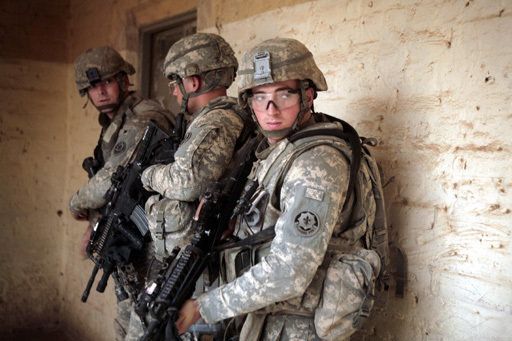
A lot of hysteria and technical confusion surround the current war of words and sabre rattling between the U.S., Israel, and Iran. Much of the media, which does not understand the military issues involved and exaggerates the dangers in the Israel-Iran confrontation, bear much of the blame. So some clarification:
*Missiles. Iran announced its Shahab-III missile is ready to retaliate against any Israeli attack on its nuclear facilities. This missile is not long-ranged, as media claims, but a medium-ranged missile. Iran says it can deliver a two ton conventional warhead over 1,200 miles. But Israeli and US sources say its maximum range is only 800-900 miles, putting part of Israel out of range. To fly further, it would need to reduce the weight of the warhead - the same technique used by Iraq in its longer-ranged Scud missiles.
The obsolescent, unreliable Shahab-III missile is highly inaccurate, particularly at maximum range. The current version is liquid fueled, meaning it is very vulnerable while being set up on its mobile launcher. Israel has developed tactics using aircraft, drones and missiles to attack enemy missiles being readied for launch. Iran has an estimated 24 Shabab-III's.
The other Iranian missiles fired this week were short ranged models of little strategic value. Tehran was caught-red handed doctoring films of the missile firings to cover up the unsuccessful launch of a short-ranged missile. This embarrassing incident reinforced the view that Iran's missile theatrics were bluff designed to mask its overall military weakness.
Israel, by contrast, has an estimated 50 Jericho-II nuclear-armed missiles with a range from 900-2,700 miles, putting every Mideast capital and parts of Russia, Pakistan, and Europe within range. Each Jericho-II carries a warhead that can destroy a major city.
*Warheads - Medium-ranged missiles are almost useless without nuclear warheads. Iran has no nuclear weapons, and even if it did manage to develop them, it would be many years before a compact warhead could be developed that could be carried atop a missiles and withstand heavy G-forces. Until Iran has nuclear warheads, Iran's Shabab's will be for show rather than military utility and, barring a lucky shot, not much more effective than Saddam Hussein's ineffective Scud missiles or medieval war machines.
*Other systems - Israel has an indestructible nuclear triad. In addition to the Jerichos, which are housed in caves and carried by mobile launchers, Israel has one of the world's top air forces with long-ranged F-15I's (Israeli version of the USAF F model) and extended range F-16's, supported by air refilling aircraft, capable of delivering nuclear weapons to Iran.
Germany also supplied Israel with three Dolphin-class submarines that are said to carry nuclear armed cruise missiles. At least one sub is always on station off Iran's coast. In addition, Israel's new Ofek-3 military satellite provides full coverage of Iran and the surrounding region. Israel is also the only nation that can access US satellite and other sensor data in real time, even allowing it to follow President Ahmadinejad's car as it drives around Tehran.
*Air Forces - Israel has probably the world's second or third most potent air force, with around 400 state-of-the art, US-supplied combat aircraft and among the world's most skilled pilots. The IAF is supported by a galaxy of electronic warfare systems, drones, and long-range recon systems with integrated command and control. Israel's Arrow is the world's most advanced operational anti-ballistic missiles system said to be able to destroy 85% of any incoming missiles. Land and sea-based US anti-missile systems also protect Israel.
Iran's Air Force is decrepit: it has only about 165 serviceable combat aircraft, mostly of from the 60's and 70's era. The only aircraft Iran has capable of striking Israel are 18-20 Soviet-era SU-24's and a handful of dangerously deteriorated 40-year old US-supplied F-4 Phantoms and F-14's. The few can still fly would be sitting ducks for Israel's Air Force.
*Capability. Thanks to US support, Israel remains two full military generations - or even more - ahead of its Arab and Iranian rivals who must increasingly rely on Chinese and meager amounts of Russian arms. Israel is three generations ahead in all-important electronic warfare and command and control. Israel's raid on Syria last year showed it could easily neutralize Syria's air defenses, which are more modern than Iran's.
*Destruction Factor. Israel's partisans keep hearing that one nuclear weapon would destroy the Jewish state. This is true. But this also applies to Egypt, where a single nuke on the Aswan Dam would inundate the nation and kill millions. This is also true of Syria, Lebanon, the Gulf Emirates, Jordan, and Iraq. Only Saudi Arabia and Iran have strategic space.
One nuclear strike on Tehran would put Iran out of business for years. Any nuclear strike in the Mideast would raise huge storms of radioactive dust that would blanket the area and US troops in Iraq. An Israeli or US attack on Iranian nuclear sites would release substantial amounts of radiation.
Thanks to its strategic triad, Israel's nuclear forces are indestructible, hence capable of devastating retaliation against any enemy nuclear strike. The Bush administration has vowed nuclear retaliation against any nation that attacks Israel with nuclear weapons.
So long as it has nuclear weapons, Israel cannot hope to prevent its neighbors from one day acquiring similar rms. Israel will have to learn to live with this threat, as does the United States every day, until there is comprehensive Mideast nuclear disarmament. So the old Cold War system of mutual assured destruction may remain the foundation of Mideast nuclear peace.
